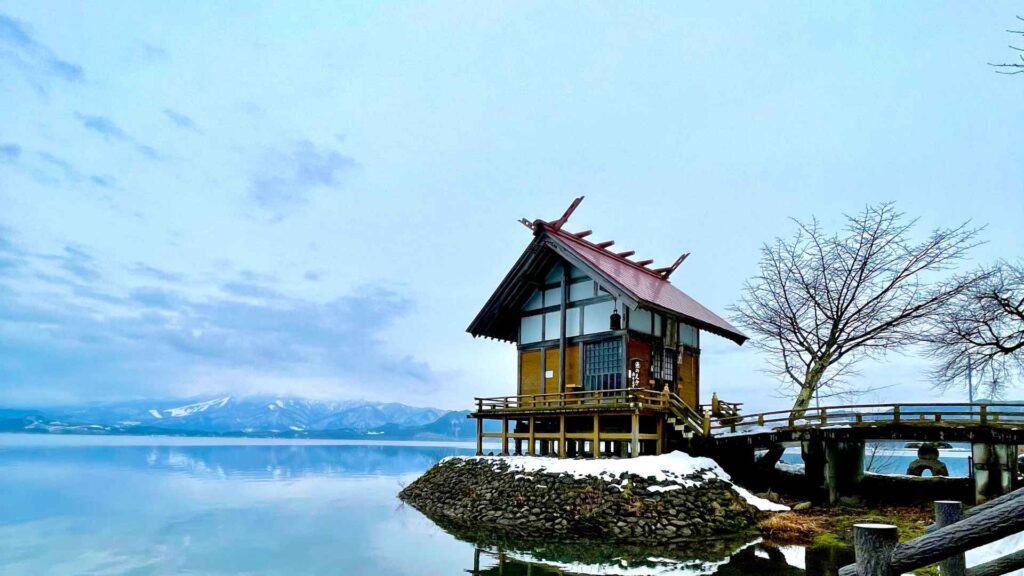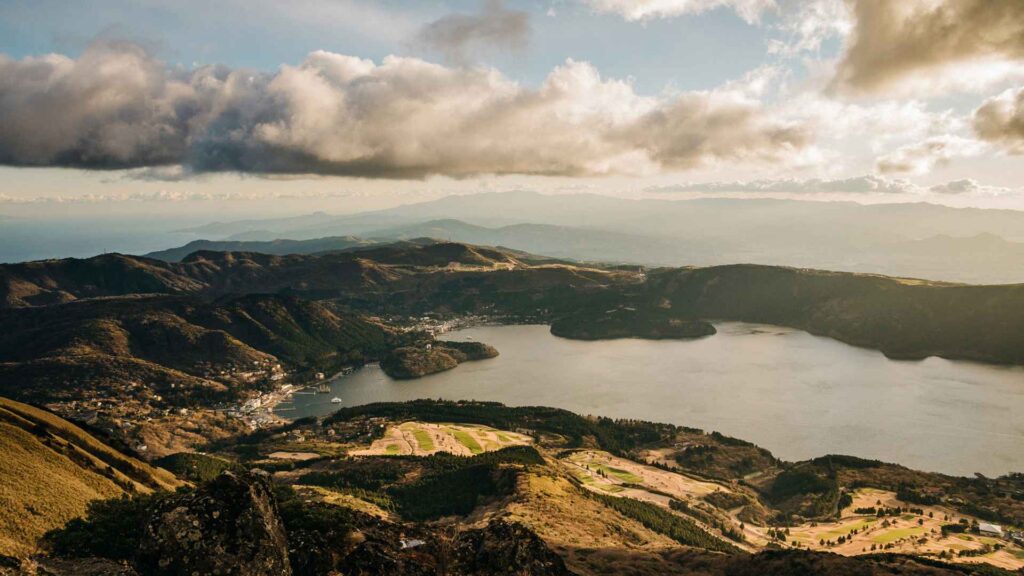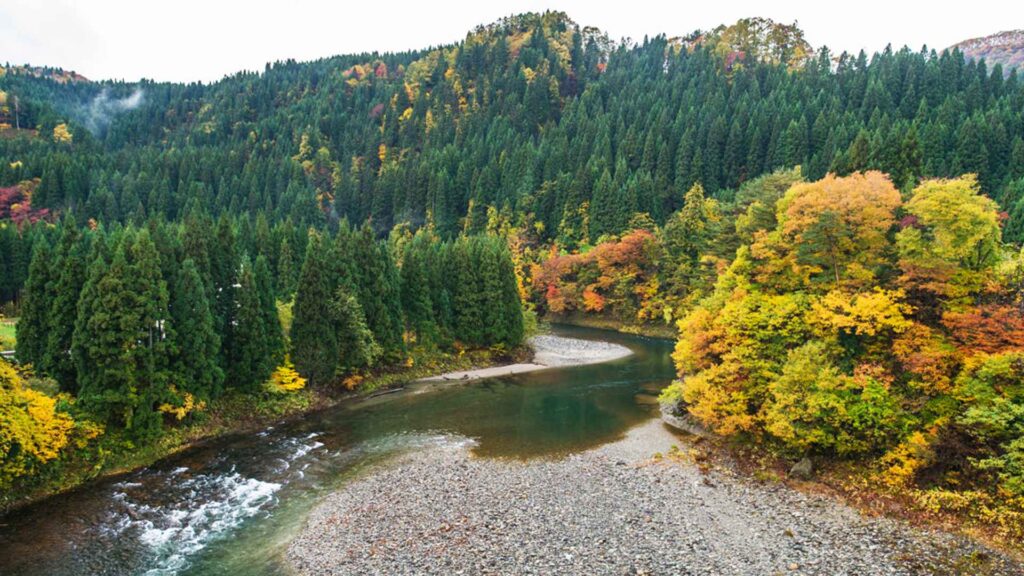Akita Cruise Port might not be the first place you imagine when you think of Japan, but it offers a tranquil gateway to the region’s unspoiled beauty.
From lush mountains to lively festivals, this charming destination invites curious travelers to experience an authentic side of Japan few have ever seen.
Understanding Akita Cruise Port
Akita Cruise Port, also known as the gateway to the scenic Tohoku region, sits along the western coast of Japan’s main island, Honshu.
Though smaller than major ports like Tokyo or Yokohama, it has its own endearing charm. Modern facilities welcome cruise passengers, making arrivals and departures stress-free.
Yet what truly distinguishes this port is its close proximity to nature and historic attractions, allowing you to sample Akita’s best-kept secrets without straying far from the dock.

A Brief History
- Historically, Akita thrived on trade and commerce, acting as a strategic point for goods traveling from the Sea of Japan into the interior.
- Over centuries, the local culture flourished thanks to ample resources like rice and timber.
- Today, Akita prefecture is famous for its robust agriculture, including the cultivation of premium-quality rice used in the area’s prized sake.
Port Facilities
A modern cruise terminal greets visitors with clean, spacious waiting areas and helpful information booths.
Staff members often speak English and offer maps, brochures, and guidance about where to go next. You’ll also find amenities like:
- Currency Exchange: Convert your dollars or euros to yen right on-site.
- Wi-Fi Access: Stay connected with free internet in designated waiting areas.
- Luggage Services: Secure lockers and porter services let you explore baggage-free.
Why Akita?
When you step off the cruise ship, you’ll notice Akita’s laid-back vibe. This region isn’t as hectic as Tokyo, so you can expect friendly smiles and fewer crowds.
The natural scenery—towering mountains and stunning coastal vistas—provides a peaceful backdrop to your adventure.
Even the city center has a homier, small-town feel that immediately sets it apart from Japan’s bigger urban hubs.
Highlight: Accessibility to Rural Wonders
Akita Cruise Port makes it easy for day-trippers or longer-stay travelers to access mountainous hot springs, traditional festivals, and historical landmarks.
You can quickly hop into a taxi or take public transportation to reach places like Kakunodate (a samurai district often called “Little Kyoto”) or Lake Tazawa (Japan’s deepest lake).
Whether you crave history, nature, or a taste of rural Japan, the port’s central location positions you to explore it all.

Getting Around: Transportation Tips
After disembarking at Akita Cruise Port, your next priority is figuring out how to navigate the area comfortably.
Thankfully, several convenient transportation options cater to different travel styles and budgets. You can choose public transit for affordability, taxis for convenience, or consider rental services for maximum freedom.
Public Transportation
- Trains: Akita Station is the main railway hub, offering local lines and the shinkansen (bullet train) for longer journeys. If you have a Japan Rail Pass, you can use the JR lines at no additional cost.
- Buses: A local bus network runs between major attractions. Pay attention to schedules posted at bus stops—service frequency may vary, especially in rural areas.
Taxis and Ride-Sharing
- Taxis: Available at designated stands near the port and train stations. Though not the cheapest method, they’re straightforward for shorter trips, especially if you’re traveling in a group.
- Ride-Sharing Apps: Services like Uber are less widespread here than in large Japanese cities, but you might find local variants that offer limited ride-hailing options.
Rental Cars and Bikes
- Car Rental: If you prefer independent exploration, several car rental agencies operate near the port and at Akita Station. Driving in Japan requires an International Driving Permit for most foreign travelers. Also, be mindful of toll roads—some highways charge fees, and payment is typically cashless via electronic passes or at toll booths.
- Bicycle Rentals: For shorter trips around the city center, renting a bicycle can be a fun, eco-friendly way to explore. Some hotels and local shops offer hourly or daily rates, and cycling paths often provide scenic views of parks and waterways.
Local Etiquette on Public Transit
When riding trains or buses, keep the volume low on devices and refrain from loud conversations.
Many locals use their commute as quiet time, so respecting this custom ensures a pleasant journey for everyone.
Also, avoid eating on public transport, especially if it’s crowded, as it’s generally considered impolite in Japan unless you are on a long-distance train with designated dining options.
Smart Cards and Tickets
Depending on your travel plans, investing in a prepaid transportation card like Suica or Pasmo can simplify your trip.
Though these cards are more commonly associated with larger cities, many train and bus lines in Akita do accept them.
Just load the card with credit, tap, and go. This method saves time and spares you the hassle of fumbling with loose change, especially if you’re hopping on and off transit frequently.
From scenic train rides that showcase Akita’s countryside to hassle-free bus routes that shuttle you among top attractions, you’ll find it easy to craft your perfect adventure.
Decide what best fits your schedule, budget, and desire for spontaneous detours. That way, you can make the most of every moment in this welcoming coastal city.
Exploring Akita City Highlights
Akita’s capital city offers a delightful blend of traditional charm and modern convenience.
Whether you’re a history buff, an art lover, or a nature enthusiast, there’s something here for everyone.
Here are some highlights you won’t want to miss as you immerse yourself in the city’s laid-back ambiance.
Senshu Park
This sprawling park sits in the heart of Akita City, creating a serene oasis amid bustling streets. Home to the ruins of Kubota Castle, it features:
- Scenic Walking Trails: Relax on paths lined with cherry trees, which burst into pink brilliance each spring.
- Historical Exhibits: Small museums and plaques give insight into the region’s samurai history.
- Ponds and Lotus Flowers: In summer, watch koi fish glide among blooming lotus plants.
Akita Museum of Art
Designed by renowned architect Tadao Ando, this museum is as famous for its bold architectural lines as it is for its collection. Inside, you’ll find:
- Fujita Tsuguharu Works: Featuring an extensive collection of works from this respected Japanese painter.
- Rotating Exhibits: Modern and traditional art pieces showcase different facets of Japanese creativity.
- Café and Shop: Pick up unique souvenirs or enjoy a refreshing tea with a view of Senshu Park.
Kawabata District
If you’re seeking lively nightlife or a relaxed evening stroll, head to Kawabata. Known for its rows of small bars and izakayas, the district lights up after sunset.
You can try local sake, sample regional dishes, and chat with friendly locals who are often eager to practice their English.
Akita Citizen’s Market
Locally known as “Akita Shimin Ichiba,” this bustling market is the perfect spot to see where everyday residents shop. You’ll find:
- Fresh Produce: Seasonal vegetables and fruits that change with the weather.
- Seafood Delights: Varieties of fish and shellfish straight from the Sea of Japan.
- Local Snacks: Rice crackers, pickled vegetables, and sweet treats to bring back to your ship.
Cultural Events and Festivals
Depending on the time of year, you may catch one of Akita’s signature festivals. The Kanto Festival in early August is the city’s biggest spectacle, where performers balance tall bamboo poles adorned with glowing lanterns.
Even if you miss the main events, you can catch smaller cultural performances around town, particularly during weekends.
Shop ‘Til You Drop
Shops line the main streets near Akita Station, offering everything from fashion boutiques to traditional crafts.
Omiyage (souvenir) stores feature Akita’s iconic kiritanpo (pounded rice on a stick) and hand-carved wooden items. Support local artisans by picking up a handcrafted piece of pottery or a colorful fan to remember your trip.
Exploring Akita City allows you to balance sightseeing with cultural immersion. Whether you’re roaming Senshu Park, sampling seafood at the Citizen’s Market, or browsing modern art, each experience brings you closer to Akita’s welcoming spirit and enduring traditions.

Immersing in Local Culture and Traditions
While Akita City gives you a taste of the region, you’ll find the heart of Akita’s culture in its rural towns, local festivals, and everyday rituals.
The Tohoku region as a whole is known for its slower pace, deep respect for nature, and vibrant folklore.
If you make the effort to venture beyond typical tourist stops, you’ll be rewarded with authentic cultural experiences.
Festivals and Seasonal Celebrations
- Namahage Festival (Oga Peninsula): This unique winter event features costumed demons—called Namahage—who visit homes to warn lazy or naughty children to shape up. The tradition is a lively spectacle complete with dancing, drumming, and roaring fires.
- Kanto Festival (Akita City): As mentioned, giant lantern poles dominate the skyline in August, creating a breathtaking nighttime display.
Traditional Crafts
Akita is known for its woodworking, including the creation of ornate wooden dolls called “kokeshi.”
Artisans pass down their skills through generations, meticulously carving and painting each piece by hand.
Visiting a local workshop can be a memorable cultural exchange. You might even get the chance to try your hand at painting your own souvenir.
Hot Springs (Onsen) Culture
Northern Japan is famous for its hot springs, and Akita is no exception. Many inns (ryokans) feature natural geothermal baths that overlook mountain landscapes or tranquil gardens.
Some onsen even allow day visitors, letting you experience:
- Soothing Mineral Waters: Said to help with stress, muscle aches, and overall relaxation.
- Rotenburo (Outdoor Baths): Bathe under the stars or surrounded by snow, depending on the season.
- Etiquette: Typically, you’ll be required to wash thoroughly before entering the bath. Tattoos may be an issue at some traditional venues, so ask in advance.
Folk Tales and Legends
Local stories often revolve around mountain spirits, shapeshifting animals, and protective deities. Small shrines tucked into forests or perched on cliff sides give a tangible connection to these legends. If you have time to chat with residents, you may uncover fascinating tales that highlight Akita’s spiritual heritage.
Local Agriculture and Rice Fields
Rice farming is the backbone of Akita’s agriculture, and the sprawling fields reflect centuries of dedication.
Driving through the countryside, you’ll see neatly arranged rice paddies extending into the distance, turning vibrant green in summer and golden in autumn.
Some farms offer guided tours or farm-stay experiences, where you can learn about planting and harvesting—an excellent way to bond with the local community.
Cultural Dos and Don’ts
- Show Respect at Shrines: Bow before entering, ring the bell (if available), and cleanse your hands at the water pavilion.
- Mind Personal Space: Even in relaxed settings, giving people a bit of elbow room is appreciated.
- Be Curious: Locals generally love explaining their customs, so don’t be shy about asking questions.
From demon-like figures during festivals to peaceful onsen experiences, Akita’s traditions are woven into daily life. Engage with these customs, and you’ll walk away with deeper respect and admiration for this corner of Japan.
Culinary Delights: What to Eat in Akita
No trip is complete without sampling the local cuisine, and Akita’s dining scene boasts comforting flavors rooted in tradition. Known for its high-quality rice, fresh seafood, and hearty dishes, Akita will impress your taste buds at every turn.
Signature Dishes
- Kiritanpo: Arguably Akita’s most famous dish, kiritanpo is made of pounded rice molded onto wooden skewers. Grilled or added to a savory nabe (hot pot), it has a toasty exterior and a soft, chewy center.
- Inaniwa Udon: Thinner and smoother than typical udon, Inaniwa udon noodles are handcrafted in the Inaniwa area of Akita. Often served cold with a dipping sauce, they have a silky texture that sets them apart from other noodles.
- Iburigakko: These smoked and pickled daikon radishes are a staple side dish. The smoky flavor pairs beautifully with sake, making it a favorite bar snack.
Local Sake
Akita’s crisp climate and pristine water sources produce some of the best sake in Japan. Breweries here take pride in centuries-old methods passed down through generations.
If you’re a sake enthusiast—or simply curious—book a brewery tour to learn about the fermentation process. You might even discover a new favorite drink.
Where to Eat
- Izakayas: Casual Japanese pubs serving small plates and drinks. Great for an informal evening out with friends or a chance to mingle with locals.
- Traditional Ryokans: Many ryokans include gourmet kaiseki-style meals, featuring seasonal ingredients arranged like works of art.
- Street Markets and Festivals: Food stalls pop up during festivals, offering everything from grilled fish to sweet mochi treats.
Vegan and Vegetarian Options
While traditional Japanese cuisine can be heavy on fish-based broths, many places now cater to plant-based diets. Look for:
- Tofu Dishes: Silken tofu with soy sauce, topped with fresh scallions.
- Vegetable Tempura: Lightly fried seasonal vegetables that often appear in set meals.
- Local Seasonal Veggies: Akita grows a variety of vegetables perfect for vegetarian soups and stews.
Dining Etiquette
- Slurping Noodles: In Japan, slurping is seen as a sign you’re enjoying your meal, so feel free to join in.
- Shared Plates: If you’re eating family-style, use the opposite end of your chopsticks to take food from communal dishes.
- Pay at the Register: In many restaurants, you bring the bill to a front counter to settle up rather than paying at the table.
Whether you’re warming up with a hearty bowl of kiritanpo nabe on a chilly day or sipping a chilled sake under the summer sun, Akita’s food scene offers a culinary story that’s both comforting and uniquely flavorful.
Tips for a Memorable Visit
With so many experiences to choose from, it’s easy to feel overwhelmed when planning your Akita adventure.
From budgeting for transportation to knowing what to pack, here are practical tips to ensure your visit is as smooth and memorable as possible.
Plan for All Seasons
- Winter (Dec–Feb): Temperatures can be harsh, and snow is common. Pack warm layers, waterproof boots, and consider accommodations with onsen access for relaxation.
- Spring (Mar–May): Cherry blossoms bloom around April, but nights can still be chilly. Bring a light jacket and plan outdoor activities during the day.
- Summer (Jun–Aug): Humid and warm, punctuated by occasional rain showers. A light umbrella or rain jacket can come in handy.
- Autumn (Sep–Nov): The foliage is breathtaking, but temperatures drop quickly as winter nears. Pack layers and plan outings around peak leaf-viewing times.
Language and Communication
English signage is available at major tourist spots, but in rural areas it may be sparse. Learning basic Japanese phrases—like greetings and how to ask for directions—goes a long way. Download an offline translation app, too, especially if you plan to explore beyond city limits.
Cash vs. Card
While credit cards are widely accepted in urban areas, cash is still king in many rural parts of Akita. Carry enough yen for smaller shops, street food vendors, and train or bus fares. You can find ATMs at convenience stores like 7-Eleven, which often accept international cards.
Respecting Local Customs
- Shoes Off: Pay attention to whether you need to remove your shoes at the entrance of temples, ryokans, or even certain restaurants.
- Recycling and Trash: Japan has strict rules about waste separation. Look for labeled bins and follow local guidelines.
- Quiet Time: Avoid loud phone calls or conversations on trains, and keep your device on silent mode out of courtesy to fellow passengers.
Booking Accommodations
If your cruise stop extends into an overnight stay, consider:
- Ryokans: For a truly local experience, complete with tatami mats and hot spring baths.
- City Hotels: Ideal for convenient access to restaurants, shops, and public transport.
- Rural Guesthouses: A chance to immerse in countryside living, perfect for travelers who enjoy off-the-beaten-path experiences.
Navigating Festivals and Events
Some of Akita’s festivals get crowded, with limited seating and viewpoint options.
- Arrive Early: Secure a spot before the event starts, especially for big festivals like Kanto.
- Local Etiquette: During parades or performances, remain seated or stand in the designated areas. Be mindful of not blocking others’ views.
With a bit of foresight and flexibility, your Akita journey can be one of the most enlightening and enjoyable segments of your cruise.
Embrace the region’s tranquil pace, treat locals with kindness, and let yourself be captivated by the many wonders that Akita has to offer.


